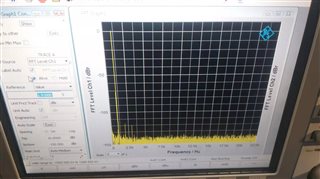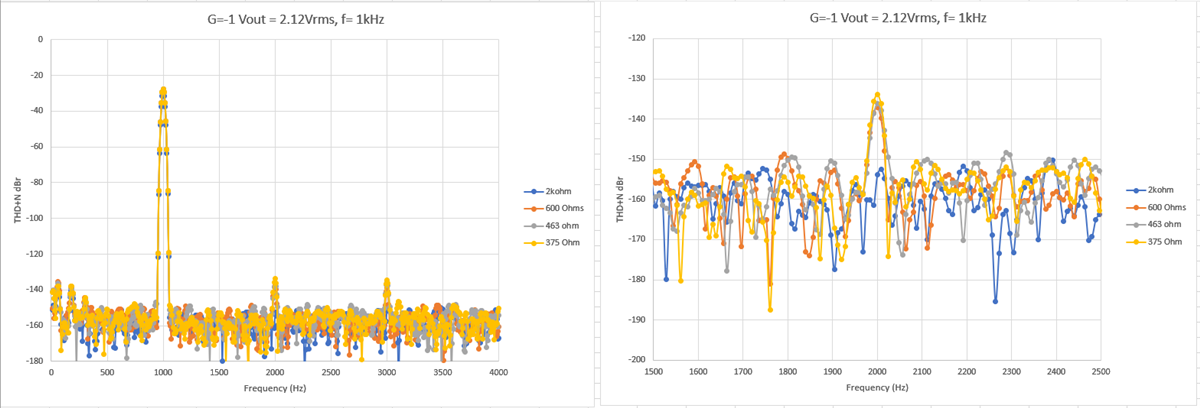Other Parts Discussed in Thread: PCM1798, OPA1611, PCM4222
i'm using opa1612 to design a single end to differential circuit. schematic as follows.
all resistor used in schematic are thin film and caps are NPO.
VF3,VF4 have very good thd about -125dbc(1khz, 6vpp sin wave)
and VF1 has similar thd performance with VF3/4 as U2 operate in G=2 mode.
but VF2 thd degrade to -115dbc as U1 operate in G=-1 mode.(HD2 contributes mostly thd degrade, about 10db)
from opa1612 datasheet, G=-1 has slight thd degrade compared to g=1. but below U1 circuit THD degrade a lot.
all above thd measure condition is load=600ohm by R&S UPV audio analyzer .
opa1612 supply is +/-11.5V. use soic package. and i'm wondering whether G=-1 THD performance related it's package. as opa1612 has two package, one is SOIC and the other is WSON package with better thermal performance.
and i attach G=-1 and G=2 spectrum picture.
can you help to analyze why G=-1 degrade HD2 a lot in above schematic design.
THANKS!





